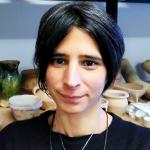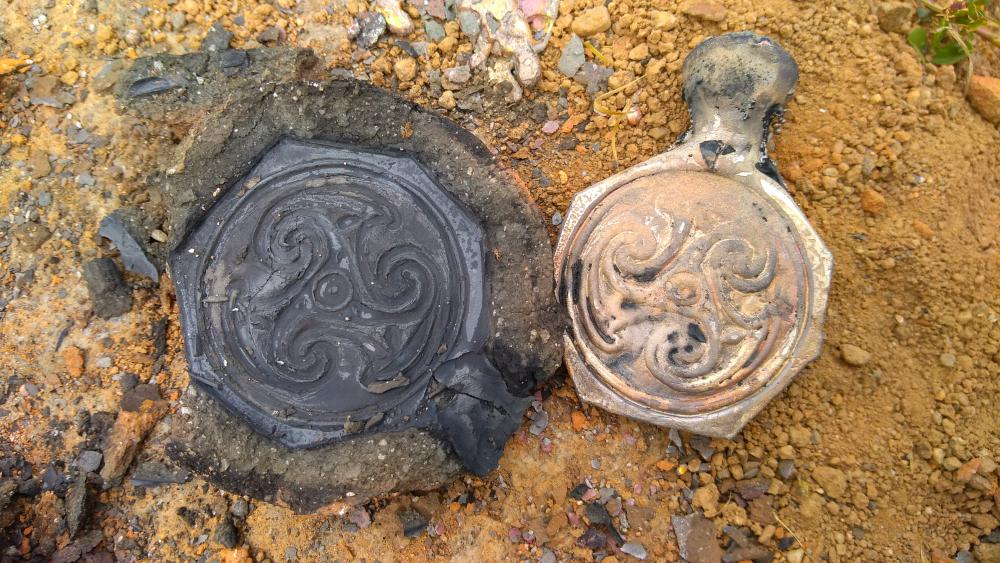
10 October, 2024

Lara Comis
Posted: 27 August, 2018

We continue our August blog series on Cultural Heritage. Today’s blogger, Lara Comis, received her bachelor’s degree in the Conservation of Cultural Heritage in Italy and her MA in Experimental Archaeology in the UK. She is currently an Irish Research Council PhD candidate at the School of Archaeology at University College Dublin with her topic entitled ‘Exploring the uses of Experimental Archaeology in European Archaeological Open-Air Museums’.
What is experimental archaeology? We see many activities labelled like that. Using ancient technologies, long lost in time and brought back by archaeology, researchers and amateurs, as well as museum operators and educators, practice experimental archaeology to ‘make things’, often engaging the public in full sensory experiences. It is indeed an incredibly fulfilling experience to regain long lost know-how. But there is even more to it than just the joy of making things the way our ancestors did. Researchers use experimental archaeology to discover new things about the past, adjust old ideas, and re-assess interpretations of how humans lived. Their work is also incredibly important, as their discoveries enhance the value of excavations of archaeological sites. Therefore, experimental archaeology is a terrific tool primarily for research, but also for tourism and education. Moreover, when experimental archaeology becomes ‘applied experimental archaeology’, to use Dr Bill Schindler’s definition, sustainable best practices from the past can be used today for the benefit of humankind and the planet itself.
There is a new kind of museum in which experimental archaeology is used extensively: Archaeological Open-Air Museums (AOAMs). The international network of Experimental Archaeology and Open-Air Archaeological Museums (EXARC) was created to study them across Europe and deliver a common definition for AOAMs recognised by the International Council of Museums (ICOM). These are open air museums with true-to-scale reconstructions of buildings and dwellings belonging to ages from prehistory to more recent times, in which replicas of archaeological artefacts are displayed and used (sometimes with the fundamental aid of re-enactors) for the pleasure of archaeologists, visitors and schoolchildren. When we visit an Archaeological Open-Air museum, we are not facing the traditional hands-off approach to relics of the past: the past is surrounding us, allowing us to experience a full physical representation of times gone by. What was previously excluded from our enjoyment for preservation issues now becomes a full-sensory involvement. The history of AOAMs is interesting from the point of view of reconstructions and is closely linked with the provision and, sometimes, commodification of cultural identity. Therefore, the use of AOAMs entails challenges in relation to the communication of values about the past.
In recent years, universities have increasingly engaged in experimental archaeology because of its potential for research and teaching, as can be seen by the establishment of the Centre for Experimental Archaeology and Material Culture (CEAMC) at University College Dublin, which is one of the few designed, dedicated university facilities for such research in the world.
In my research, I seek to bridge the divide between knowledge created in a university research facility and the stories as told in AOAMs. To do so, I am undertaking a survey of best practices in experimental archaeology, to investigate the link and potential relationship between museums, academic institutions and all the independent activities and perticipants (re-enactments, volunteers, professional craftspeople, etc.) with the fundamental aid of the EXARC international network. With this, I hope to find out more about how research-driven experimental archaeology and activities at Archaeological Open-Air Museums can best be used in an attractive and engaging way to enhance people’s visitor experiences, as well as to contribute to our knowledge about the past.
Disclaimer: The opinions expressed in our guest blogs are the author’s own, and do not reflect the opinions of the Irish Research Council or any employee thereof.